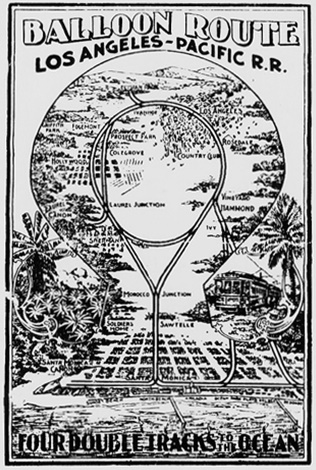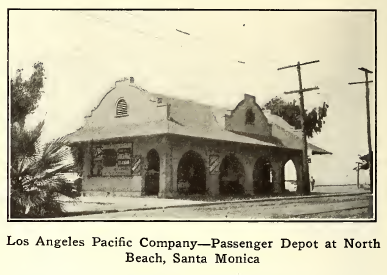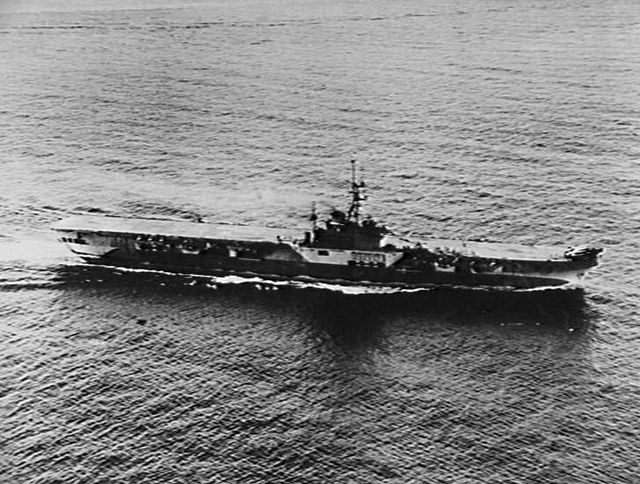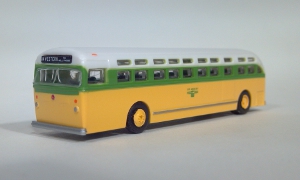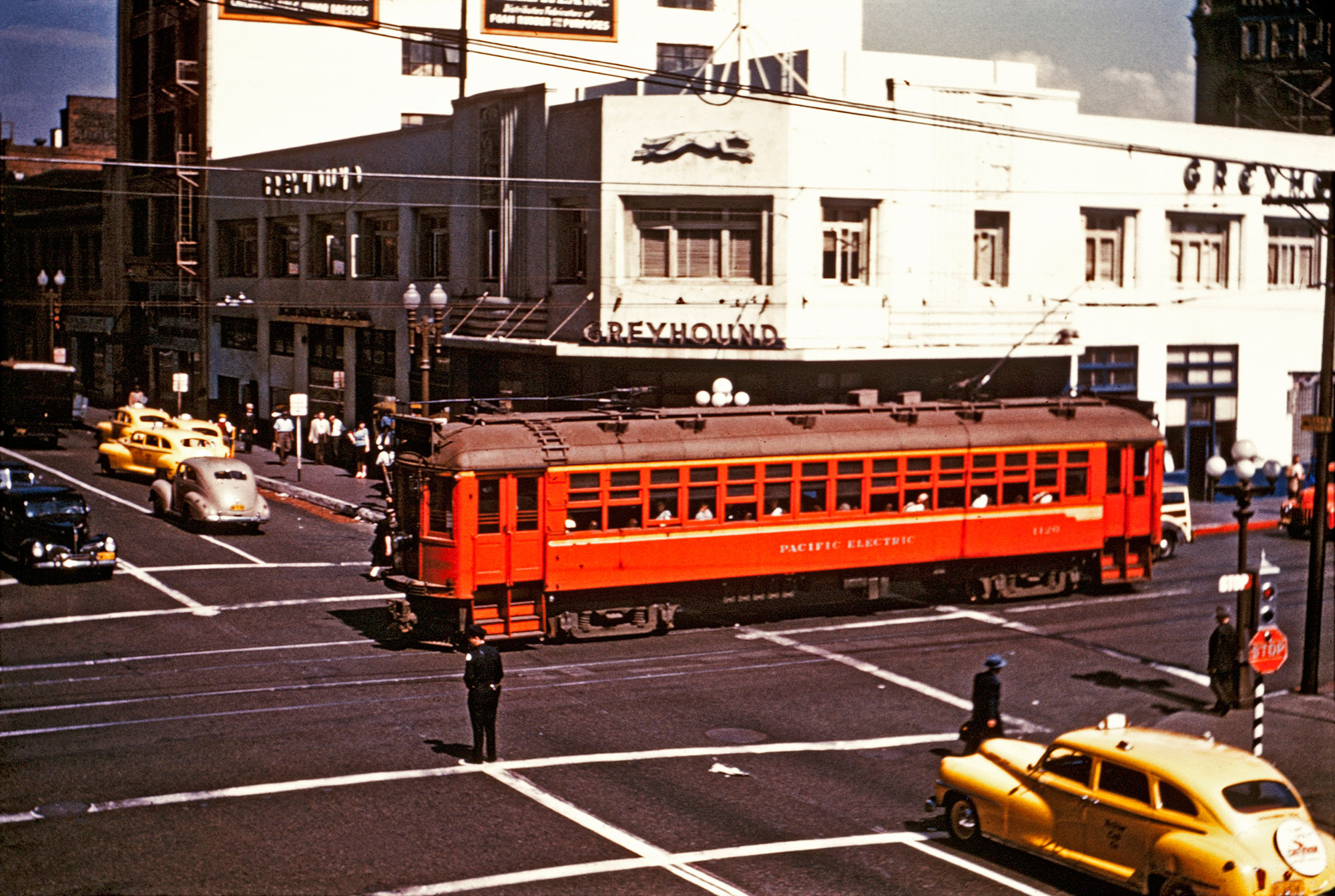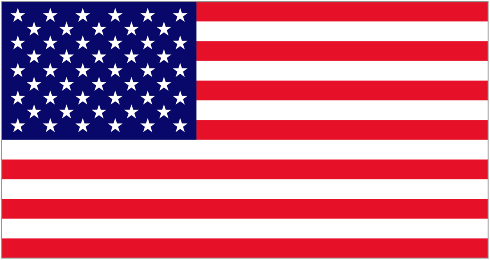Company History: The Los Angeles Pacific Railroad (1896−1911) (LAP) was an electric public transit and freight railway system in Los Angeles County, California. At its peak it had 230 miles (370 km) of track extending from Downtown Los Angeles to the Westside, Santa Monica, and the South Bay towns along Santa Monica Bay.
On September 1, 1911, in what is called “The Great Merger”, the Southern Pacific consolidated seven electric railways into the new “Pacific Electric Railway Company”. The Los Angeles Pacific lines, along with the Glendale–Burbank Line and the soon-to-be-completed San Fernando Valley Line, would become the Pacific Electric’s Western Division.
The Balloon Route Trolley trip was a featured excursion of the Los Angeles Pacific, and opened in 1901.Initially, the line ran from the Hill Street station in downtown Los Angeles, via the Santa Monica Short Line through Hollywood to Santa Monica and Ocean Park, and then back to Los Angeles via Palms and the Venice Short Line. When the LAP was consolidated into the new Pacific Electric Railway Company (PE) in 1911, PE took over the operations and continued the excursion until 1923.
On September 1, 1911, in what is called “The Great Merger”, the Southern Pacific consolidated seven electric railways into the new “Pacific Electric Railway Company”. The Los Angeles Pacific lines, along with the Glendale–Burbank Line and the soon-to-be-completed San Fernando Valley Line, would become the Pacific Electric’s Western Division.
The Balloon Route Trolley trip was a featured excursion of the Los Angeles Pacific, and opened in 1901.Initially, the line ran from the Hill Street station in downtown Los Angeles, via the Santa Monica Short Line through Hollywood to Santa Monica and Ocean Park, and then back to Los Angeles via Palms and the Venice Short Line. When the LAP was consolidated into the new Pacific Electric Railway Company (PE) in 1911, PE took over the operations and continued the excursion until 1923.
Successor/Parent History: The PE was established in 1901 and built an electric interurban line between Los Angeles and Long Beach, California. With this first line completed in 1902, the PE began building outward in every direction. This caught the attention of Southern Pacific who at first attempted to obstruct the PE’s expansion and then bought a 45% stake in the company. Henry Huntington, PE’s founder, then established a new company, the Los Angeles Inter-Urban Railway and resumed his expansion under that flag – outside of the influence of the SP. By 1908, LAI-U had grown larger than PE but Huntington had come to a truce with Southern Pacific. He leased the LAI-U to Pacific Electric and over the next few years sold control of his various traction lines in the state to SP. In 1911, the PE, LAI-U, Los Angeles Pacific and a handful of smaller lines were combined into a greater Pacific Electric.
The new PE blanketed Southern California from San Fernando and Pasadena to the north, Santa Monica, Redondo Beach, San Pedro, Long Beach, Huntington Beach and Balboa along the coast to as far east as Redlands. With 575 miles of line, they were the largest electric railway in the world at the time of the consolidation.
Near the end of the Second World War, PE rostered 483 electric passenger cars ranging from small street cars to large interurban cars, 41 box motors for package freight, a trio of RPO-Express cars, and for heavy freight service 44 electric freight motors, 19 steam locomotives, and 6 diesels (some of which were equipped with trolley poles to trigger PE’s signal system.)
As the popularity of the automobile increased, PE began abandoning lines. In a few cases, lines that were making money were forced into abandonment to make room for new highways. In 1953, the remaining passenger service was sold to Metropolitan Coach Lines. PE continued on as a freight railroad. The freight operations were gradually dieselized with power leased from SP with the last electric freight motor switching customers along Santa Monica Boulevard in January of 1958. In 1965, Pacific Electric Railway was finally merged into parent Southern Pacific.
The new PE blanketed Southern California from San Fernando and Pasadena to the north, Santa Monica, Redondo Beach, San Pedro, Long Beach, Huntington Beach and Balboa along the coast to as far east as Redlands. With 575 miles of line, they were the largest electric railway in the world at the time of the consolidation.
Near the end of the Second World War, PE rostered 483 electric passenger cars ranging from small street cars to large interurban cars, 41 box motors for package freight, a trio of RPO-Express cars, and for heavy freight service 44 electric freight motors, 19 steam locomotives, and 6 diesels (some of which were equipped with trolley poles to trigger PE’s signal system.)
As the popularity of the automobile increased, PE began abandoning lines. In a few cases, lines that were making money were forced into abandonment to make room for new highways. In 1953, the remaining passenger service was sold to Metropolitan Coach Lines. PE continued on as a freight railroad. The freight operations were gradually dieselized with power leased from SP with the last electric freight motor switching customers along Santa Monica Boulevard in January of 1958. In 1965, Pacific Electric Railway was finally merged into parent Southern Pacific.
Brief History: The U.S. is a country of 50 states covering a vast swath of North America, with Alaska in the northwest and Hawaii extending the nation’s presence into the Pacific Ocean. Major Atlantic Coast cities are New York, a global finance and culture center, and capital Washington, DC. Midwestern metropolis Chicago is known for influential architecture and on the west coast, Los Angeles' Hollywood is famed for filmmaking.
Item Links: We found: 1 different collections associated with Los Angeles Pacific - Railroad
- Collection N Scale Model Trains: 5 different items.
Item created by: Alain LM on 2022-04-15 01:30:13. Last edited by Alain LM on 2022-04-15 01:34:10
If you see errors or missing data in this entry, please feel free to log in and edit it. Anyone with a Gmail account can log in instantly.
If you see errors or missing data in this entry, please feel free to log in and edit it. Anyone with a Gmail account can log in instantly.


